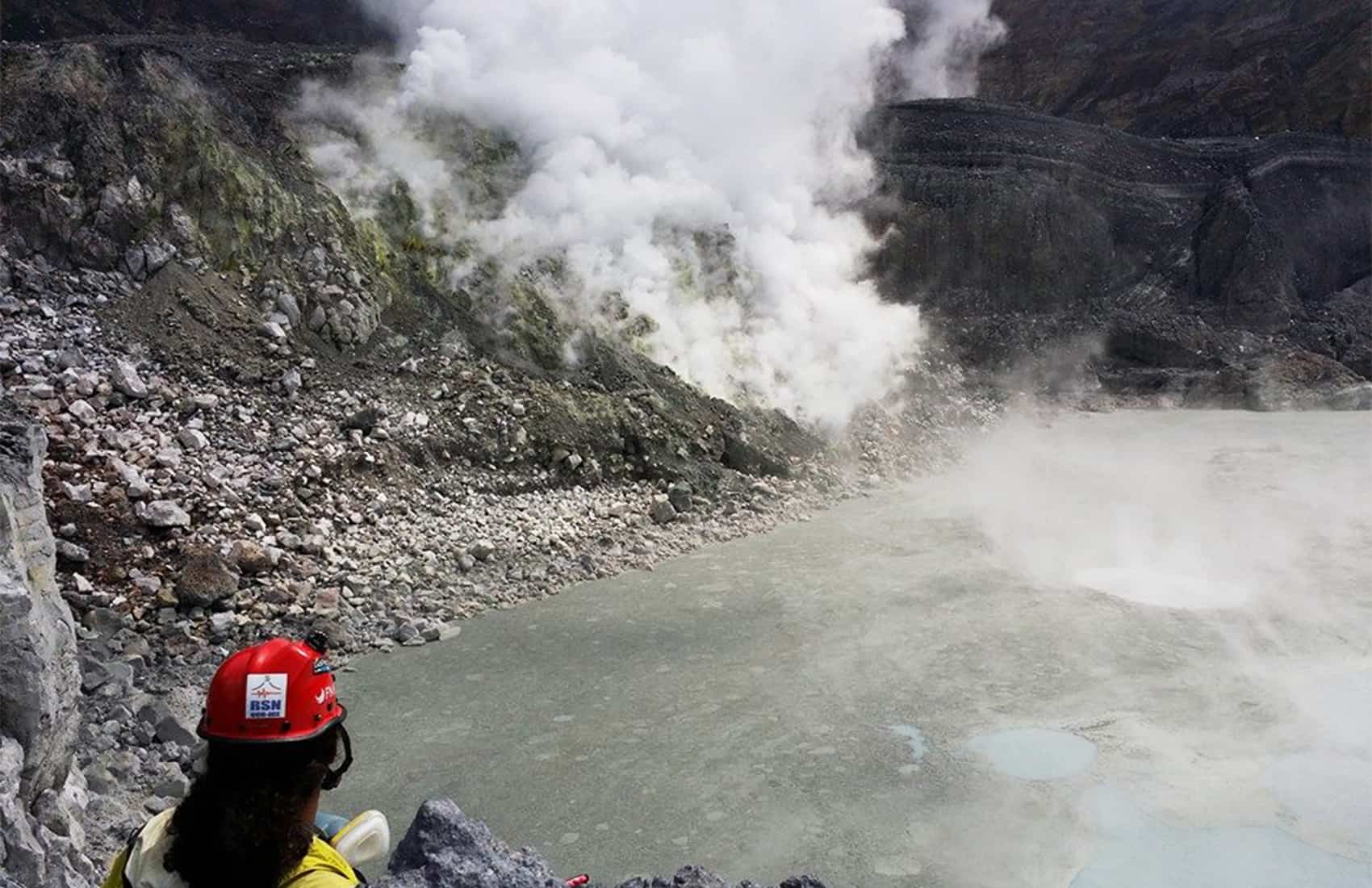An inspection by volcanologists from the University of Costa Rica’s National Seismological Network (RSN) last weekend found that the water level in Poás Volcano’s lagoon has decreased by 110 centimeters in the last month.
A group of RSN experts descended into the crater’s lagoon, known as Laguna Caliente, to check out reports by park rangers of increased volcanic activity at the site.
Volcanologist Carlos Ramírez said the decrease in water levels has been a recurring trend in recent years mostly due to a decrease in rainfall during the country’s rainy season (May-November).
Average temperatures of the lagoon’s water increased by 10 degrees Celsius compared to a previous measurement in early April, when experts recorded 39 C (102 Fahrenheit).
Last month, the lagoon lost 58,000 cubic meters of water, the RSN said.
Water acts as a natural filter for gases from the volcano. An increase in the emission of gases (read: acid rain) could occur if the lagoon’s water level continues to drop, Ramírez said. These gases would reach land surrounding the crater, and could affect agricultural areas in nearby Alajuela communities including Grecia and La Troja.
Tourist access to Volcán Poás National Park currently remains normal, but administrators are on alert to report any change in the volcano’s behavior, the expert said.
Poás’ period of increasing activity was first recorded in March 2006, with several large eruptions of water, gas and mud, known as phreatic explosions. No magma or lava is dispelled during these events.
Several small explosions over the weekend left sulfur deposits on the lagoon’s surface, and those deposits are still visible from a tourist observation deck.
So far this year, RSN experts have recorded three significant phreatic explosions at Poás. The first, on Feb. 25, reached nearly 300 meters high. On March 30, material reached 200 meters high, and on April 30, it reached 30 meters.





